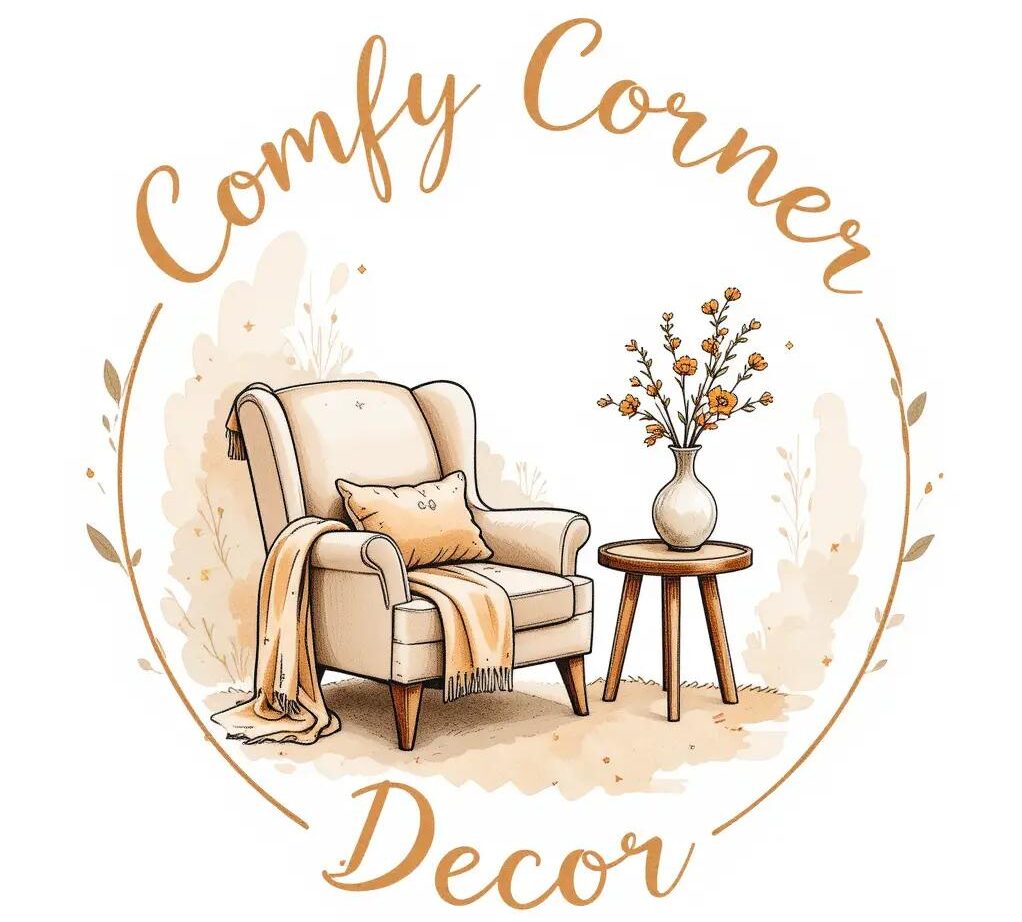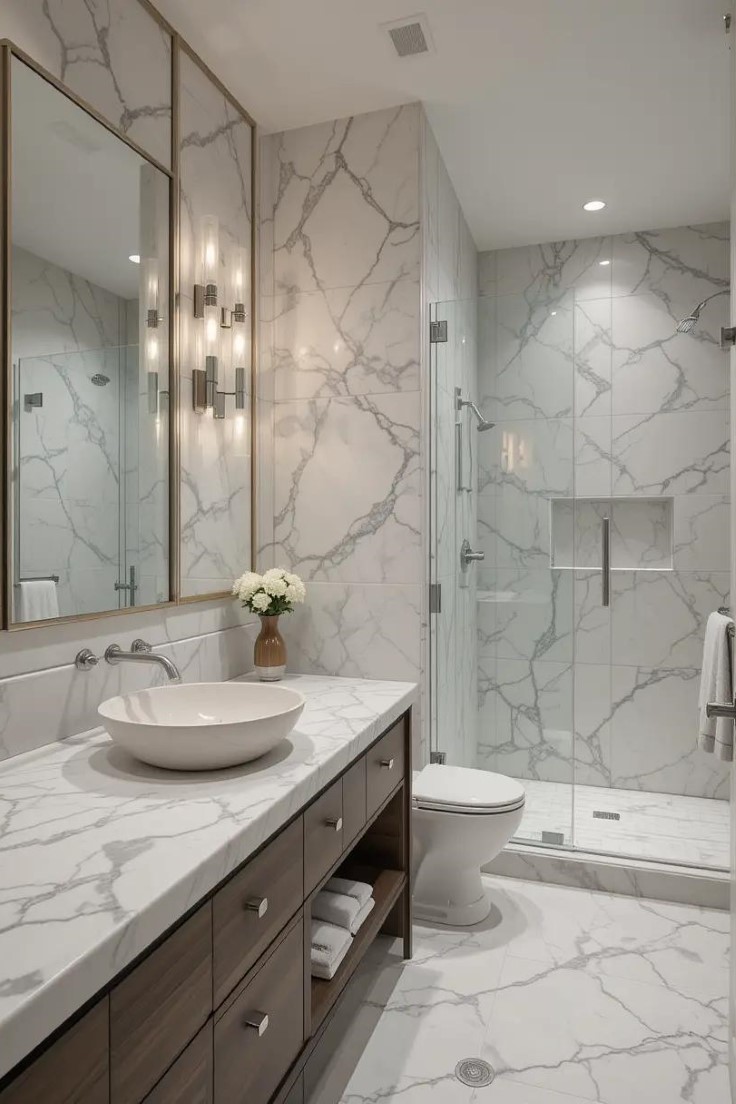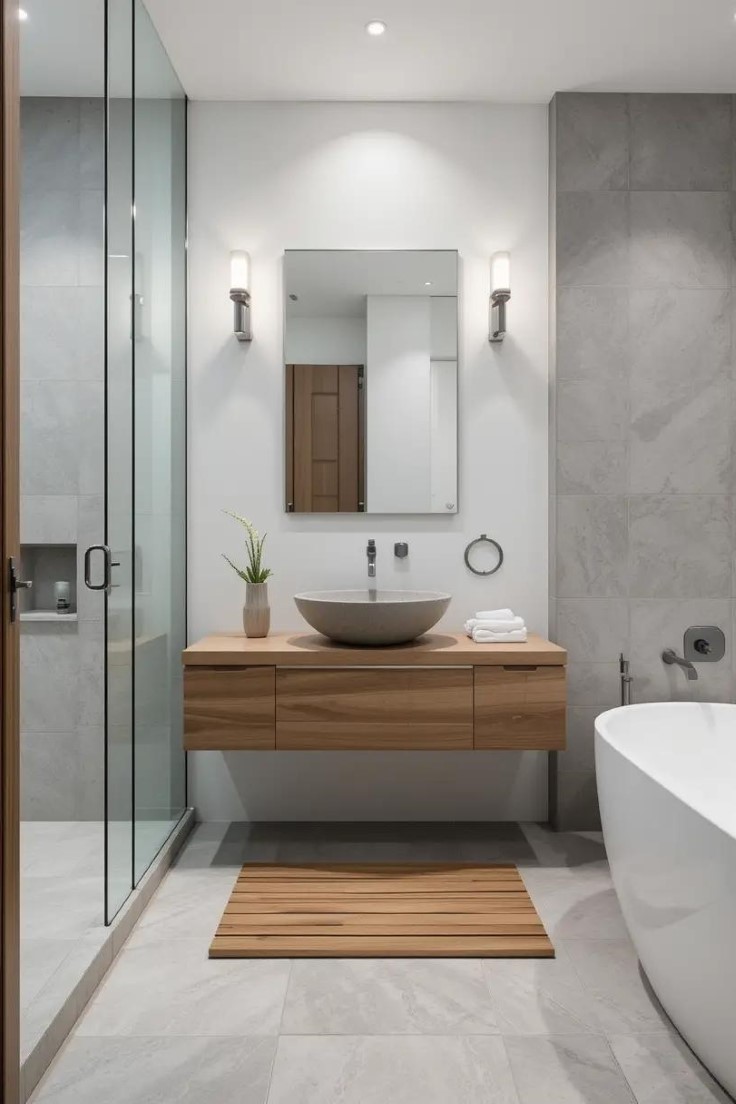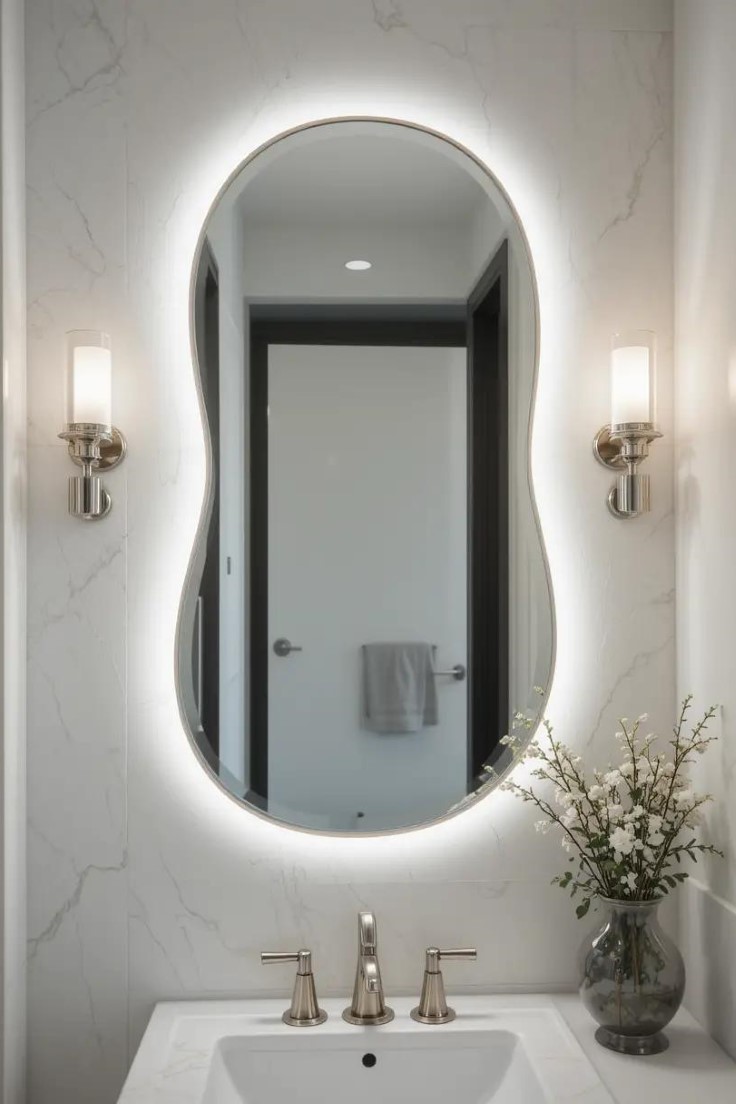This site contains affiliate links, view the disclosure for more information.
When it comes to bathroom design, few color combinations offer the perfect balance of tranquility and sophistication quite like white and gray. This classic pairing creates a foundation that feels both fresh and enduring, making it a go-to choice for homeowners seeking a bathroom that won’t quickly fall out of style. Whether you’re planning a complete renovation or simply refreshing your current space, these white and gray bathroom ideas will inspire you to create a harmonious retreat that blends functionality with refined style.
Why White and Gray Bathrooms Work So Well
Before diving into specific design ideas, let’s understand why this color combination consistently delivers outstanding results. White and gray bathrooms create a clean canvas that allows architectural details and fixtures to shine while providing a soothing backdrop for your daily routine. The neutrality of these shades means they pair beautifully with virtually any accent color or texture you might want to introduce.
The versatility of gray—from soft dove to deep charcoal—offers countless possibilities for creating depth and dimension. When combined with crisp whites, the result is a bathroom that feels both contemporary and classic at once.
20 Inspiring White and Gray Bathroom Ideas
1. Modern Marble Statement
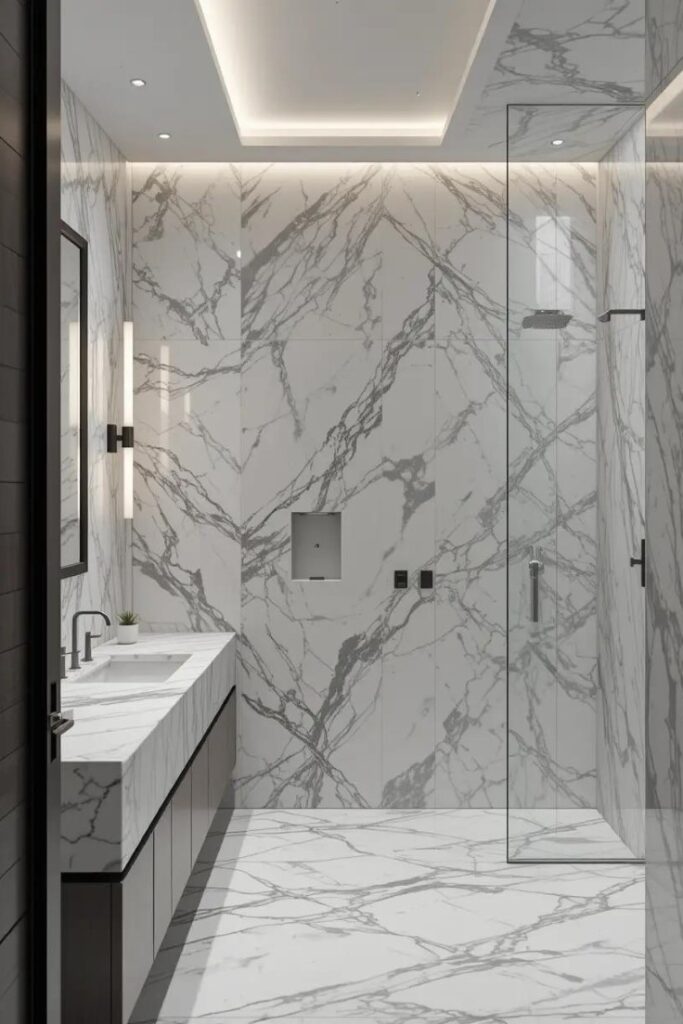
Nothing says luxury quite like marble, and in a white and gray bathroom, this material truly shines. Consider a dramatic gray-veined white marble for shower walls or countertops to create natural pattern and movement within your neutral palette. The natural variations in marble provide visual interest without disrupting the calming effect of your color scheme.
2. Geometric Tile Patterns
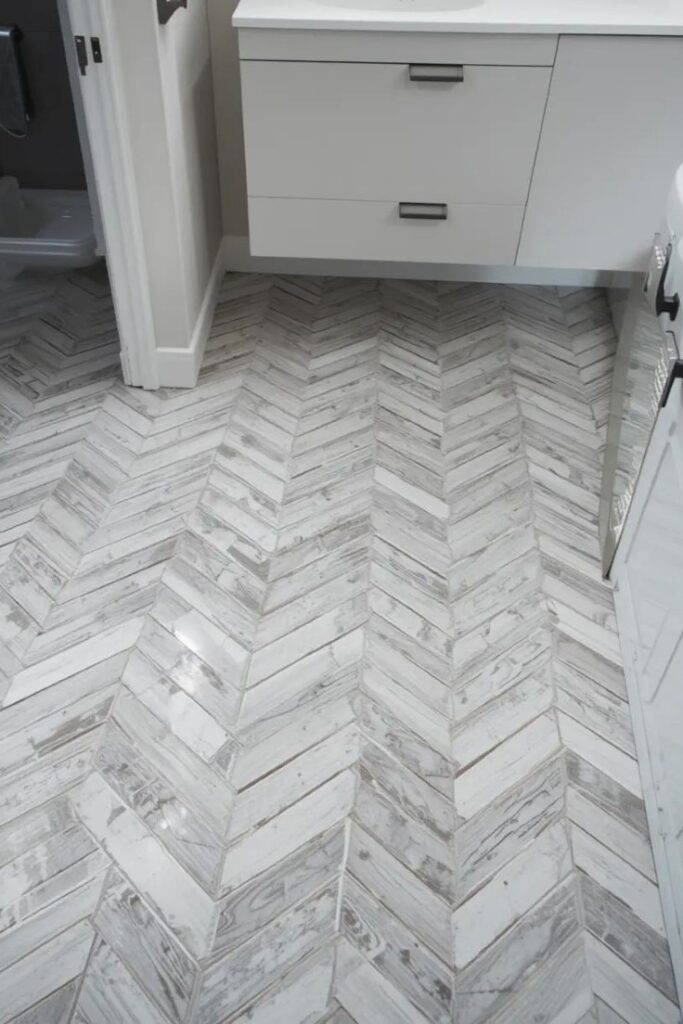
Bring energy to your white and gray bathroom with geometric tile layouts. Herringbone, chevron, or hexagon patterns add visual texture while maintaining the clean aesthetic that makes this color combination so appealing. Try gray tiles with white grout or vice versa for a subtle contrast that catches the eye.
3. Industrial Chic Elements
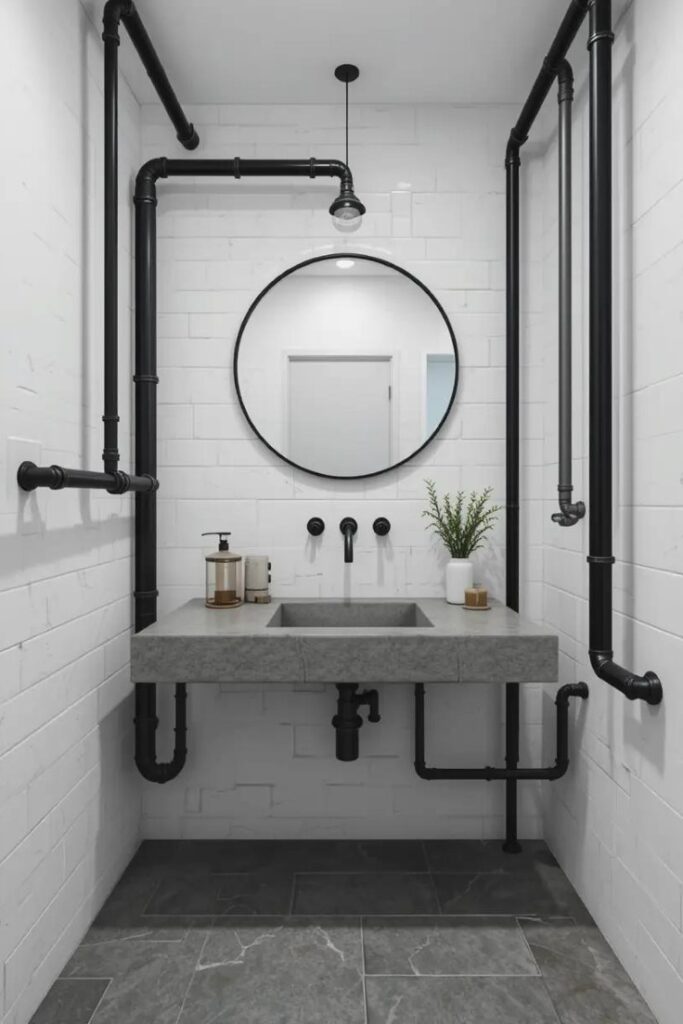
Incorporate matte black fixtures and exposed plumbing against white walls and gray flooring for an industrial-inspired white and gray bathroom. This approach creates striking contrast while maintaining the sophisticated simplicity of your neutral base. Consider concrete countertops or cement tiles for added industrial character.
4. Textural Contrasts
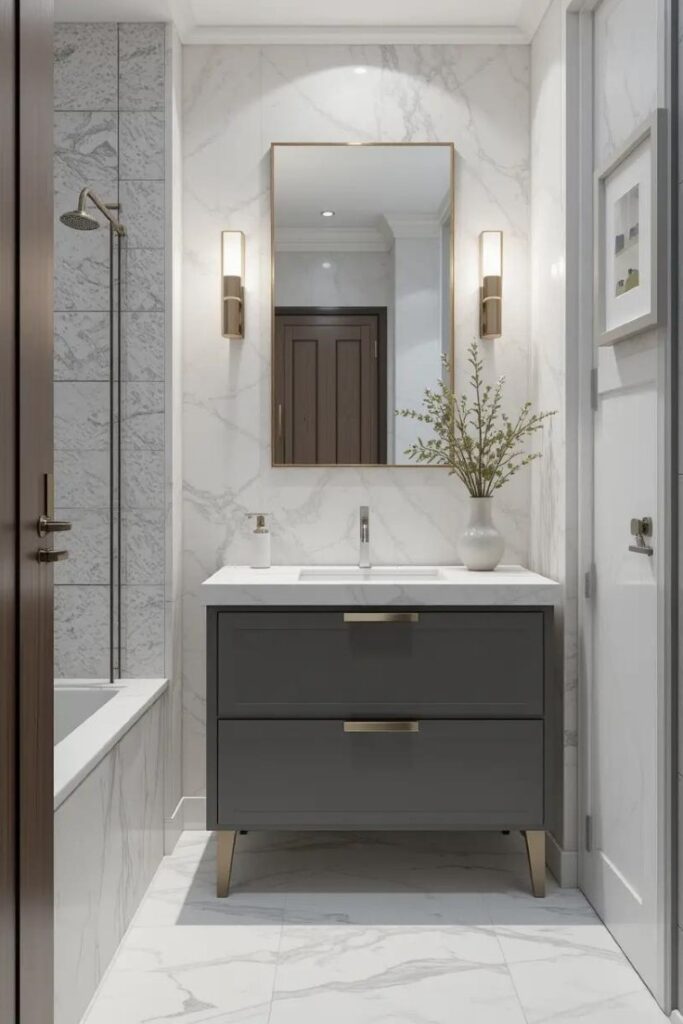
Mix different textures to add depth to your white and gray bathroom design. Combine smooth porcelain with textured stone, brushed metals with polished surfaces, or matte finishes with glossy elements to create a multidimensional space that engages the senses. These contrasts prevent the room from feeling flat while honoring your restrained color palette.
5. Statement Gray Vanity
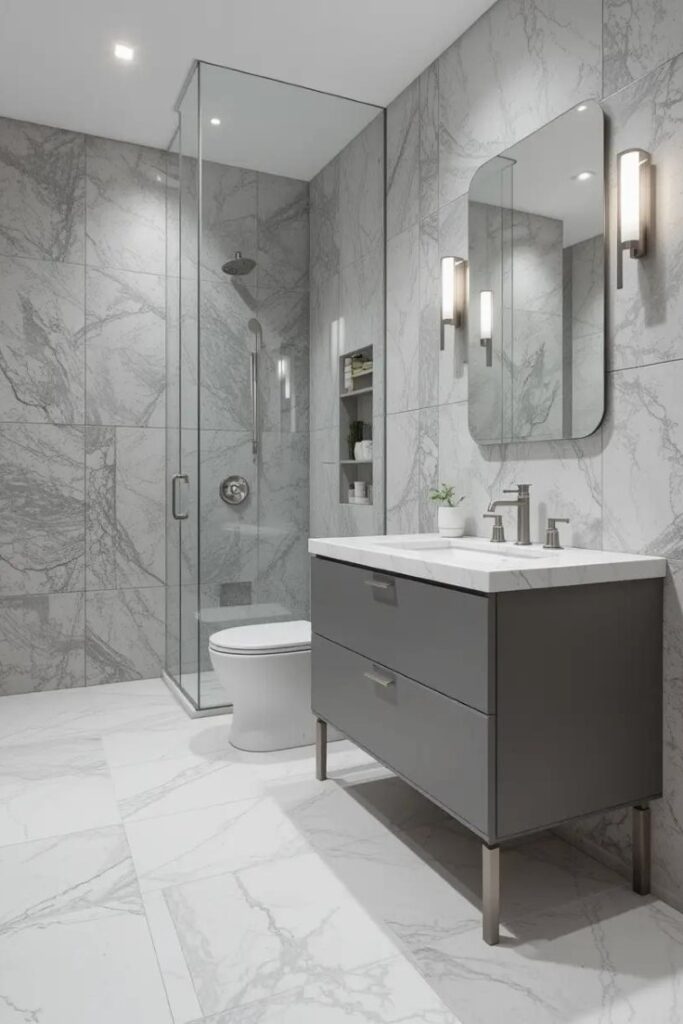
Make your vanity the focal point by choosing a sophisticated gray finish. A gray vanity grounds the space and creates a beautiful contrast against white walls, flooring, or countertops. Whether you prefer a floating modern design or something more traditional with decorative details, this element adds substantial visual weight to your white and gray bathroom.
6. Subtle Pattern Play
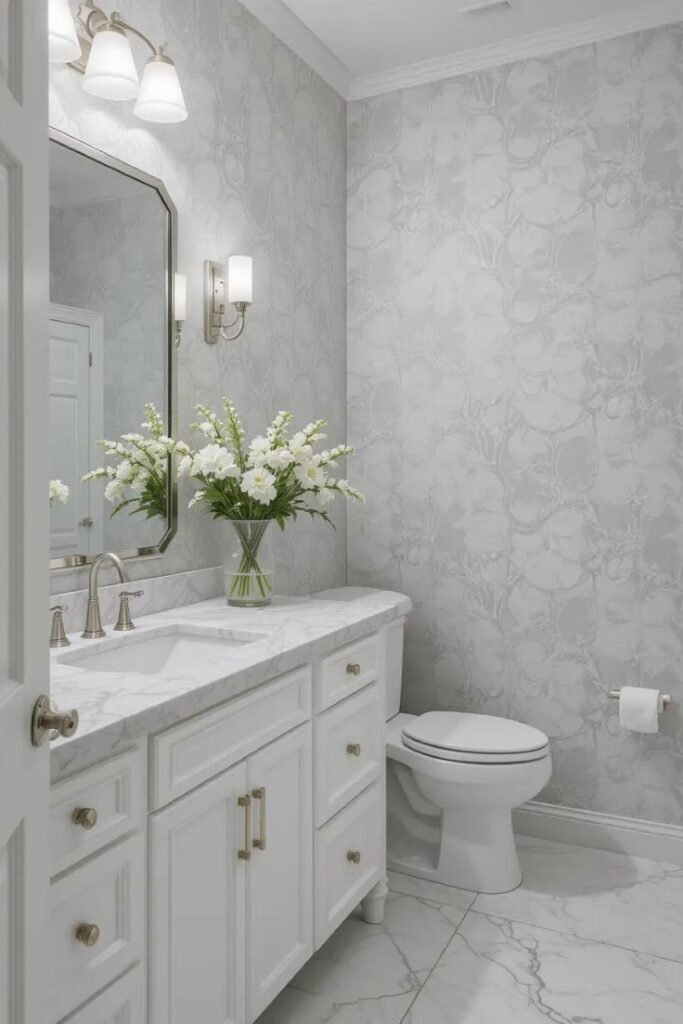
Introduce visual interest through patterned tiles or wallpaper that incorporates both white and gray tones. A subtle pattern can transform a simple white and gray bathroom into something extraordinary without overwhelming the space. Consider a light gray damask wallpaper in a powder room or patterned floor tiles in a master bath.
7. Gray Accent Wall
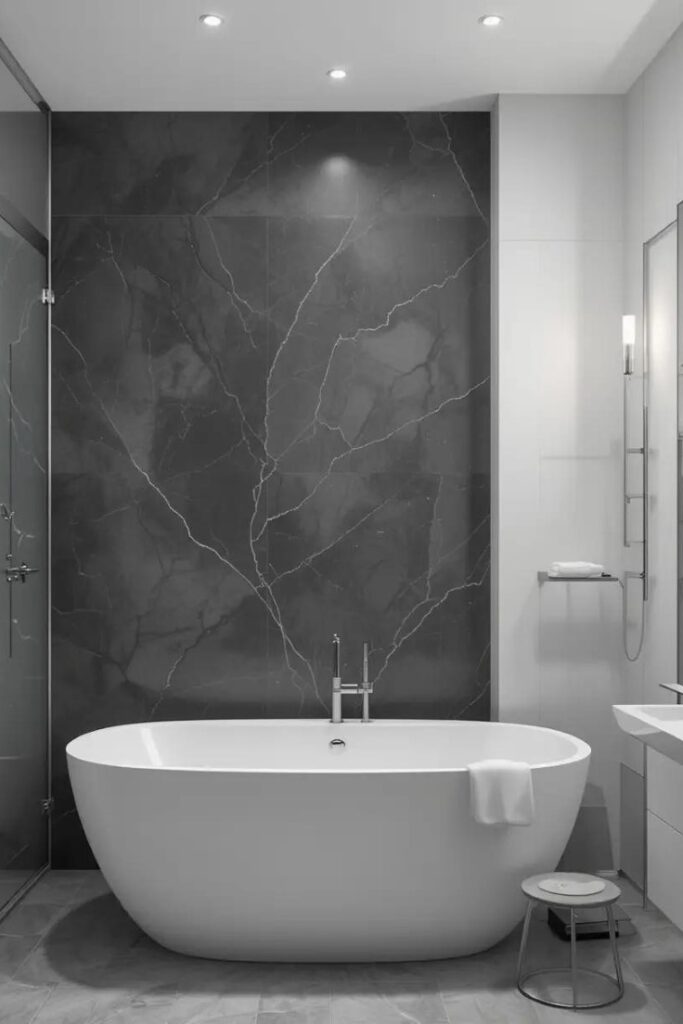
Create depth and dimension by featuring one wall in a deeper gray shade. An accent wall draws the eye and can make your white and gray bathroom feel more spacious by creating the illusion of receding space. This works particularly well behind a vanity or bathtub to frame these important elements.
8. Layered Lighting
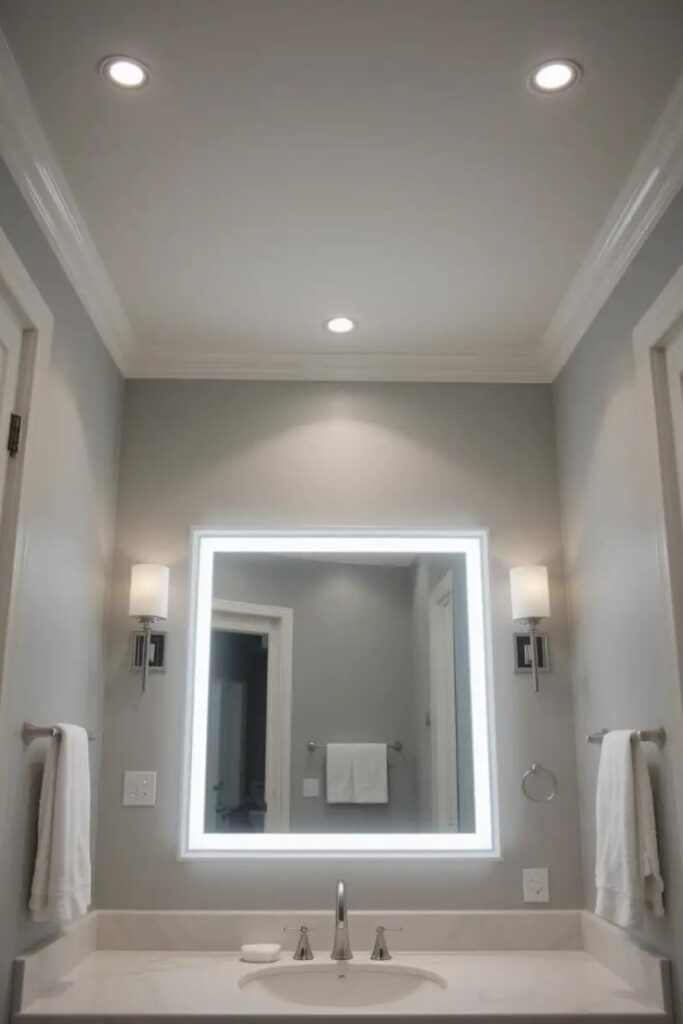
Proper lighting transforms any bathroom, but in a white and gray bathroom, it becomes even more crucial for highlighting the subtle variations in tone. Incorporate multiple light sources—overhead, task, and accent—to enhance the dimensional quality of your neutral palette and prevent the space from appearing flat or lifeless.
9. Natural Wood Accents
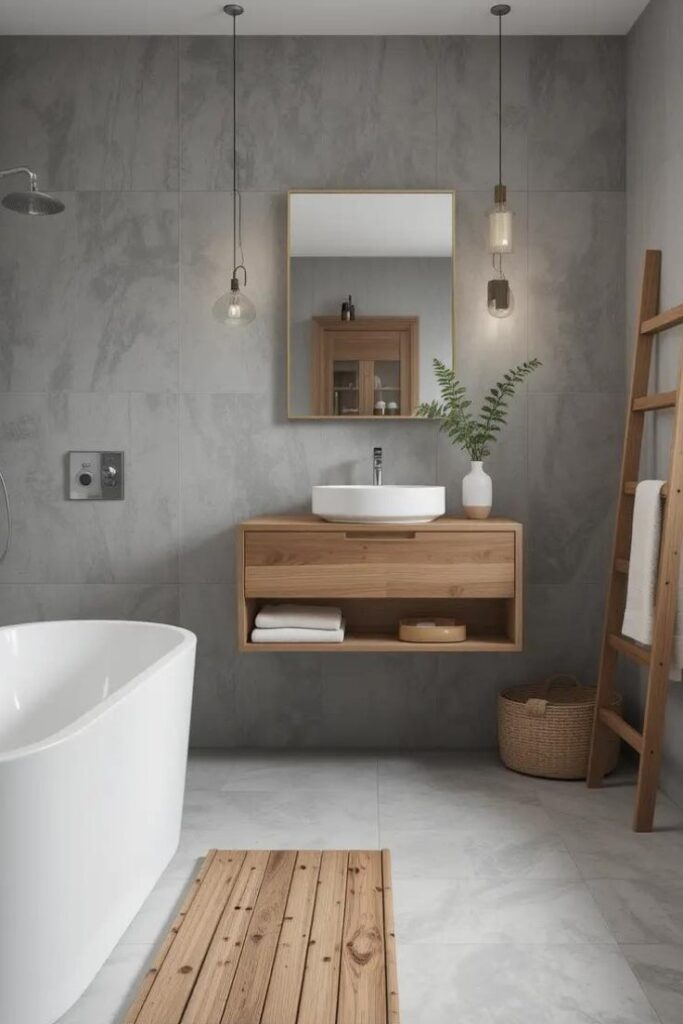
Warm up your white and gray bathroom with natural wood elements. A wooden vanity, storage ladder, or even simple accessories like a teak bath mat can soften the coolness of gray while maintaining the clean aesthetic. Light to medium wood tones work best to preserve the airy quality of the space.
10. Glass and Transparency
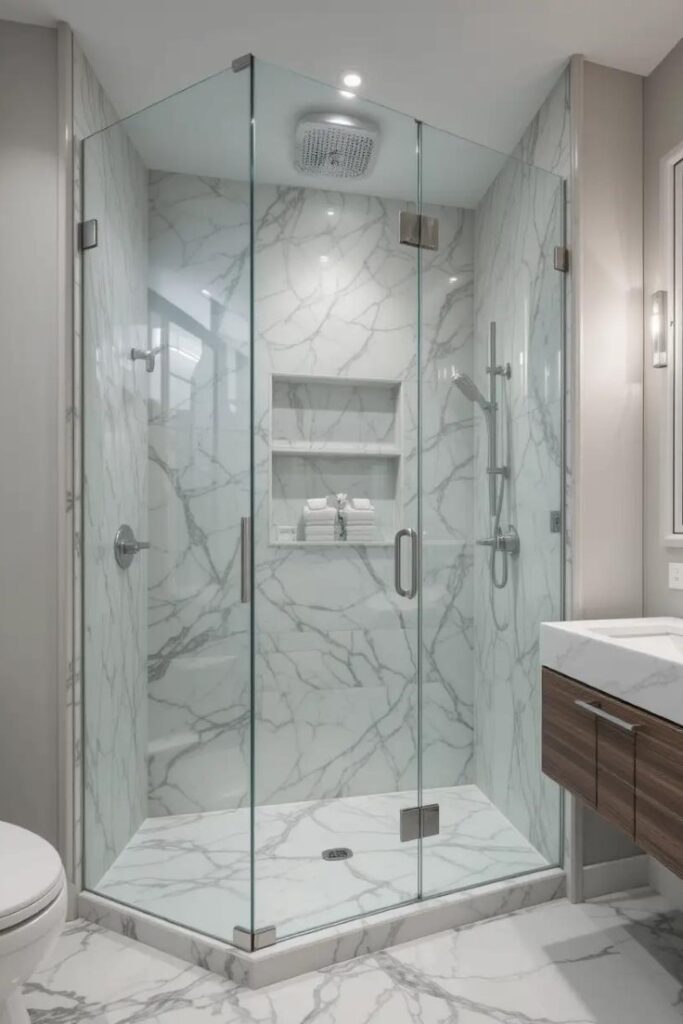
Maximize the sense of openness in your white and gray bathroom with transparent elements. A frameless glass shower enclosure creates an uninterrupted visual flow, making even compact bathrooms feel more spacious. This approach also allows your beautiful tile work to remain fully visible.
11. Mixed Metal Finishes
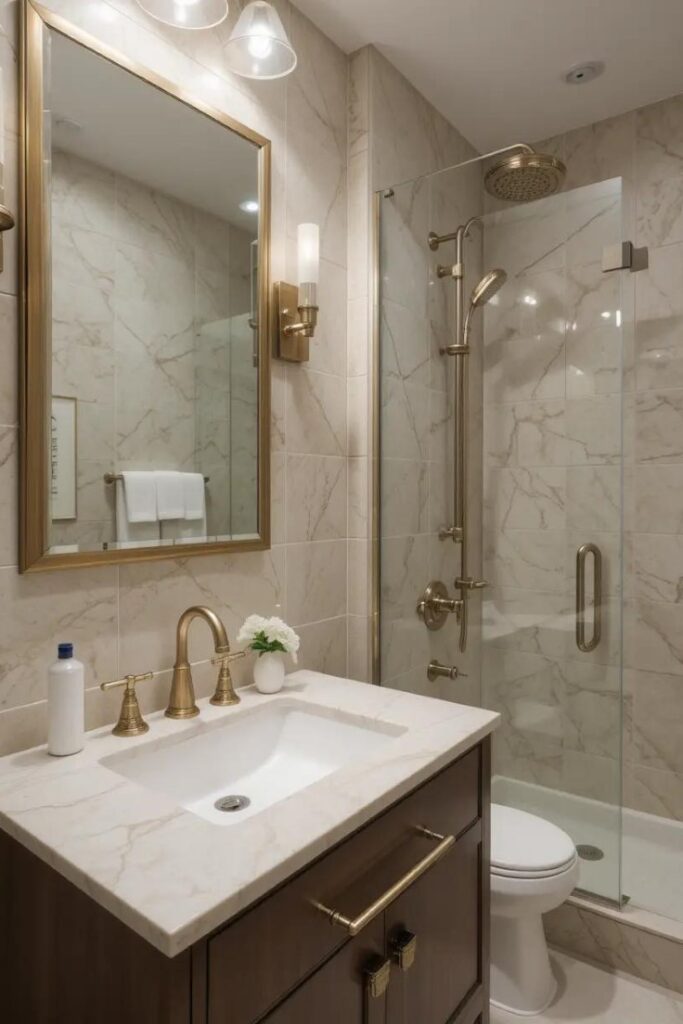
Introduce character through carefully selected metal fixtures. In a white and gray bathroom, metal finishes like chrome, nickel, or brass become important design elements that add personality and warmth. Don’t be afraid to mix metals—just maintain consistency within fixture types for a curated rather than chaotic look.
12. Crisp White Subway Tile
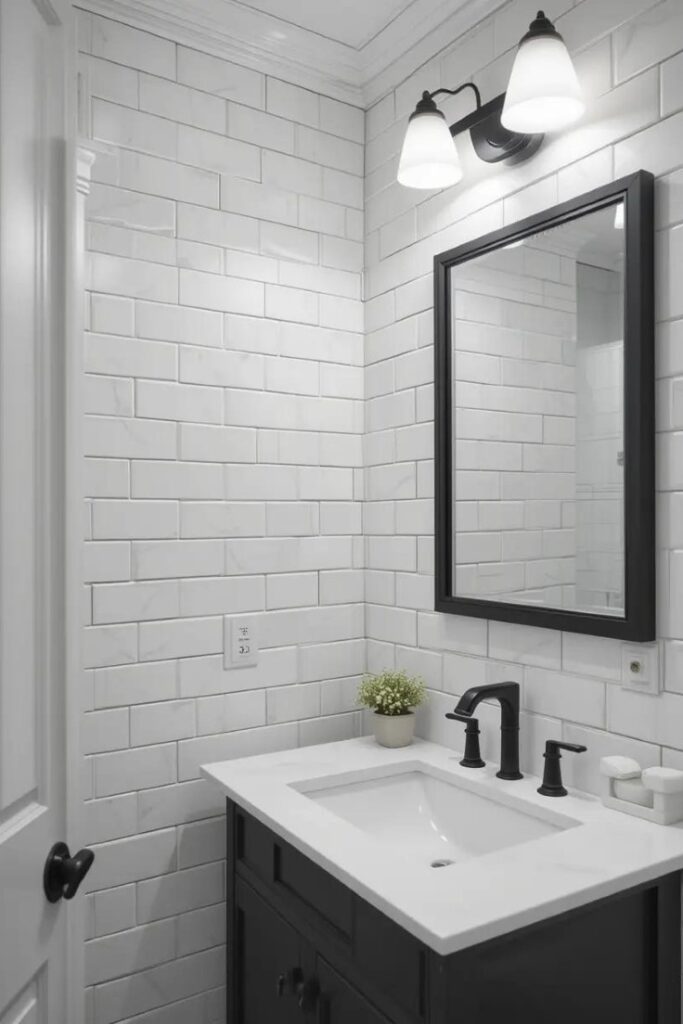
Sometimes simplicity delivers the strongest impact. Classic white subway tiles with light gray grout create a clean, timeless backdrop that allows other elements in your white and gray bathroom to take center stage. This approach works with virtually any style, from traditional to contemporary.
13. Soft Gray Cabinetry
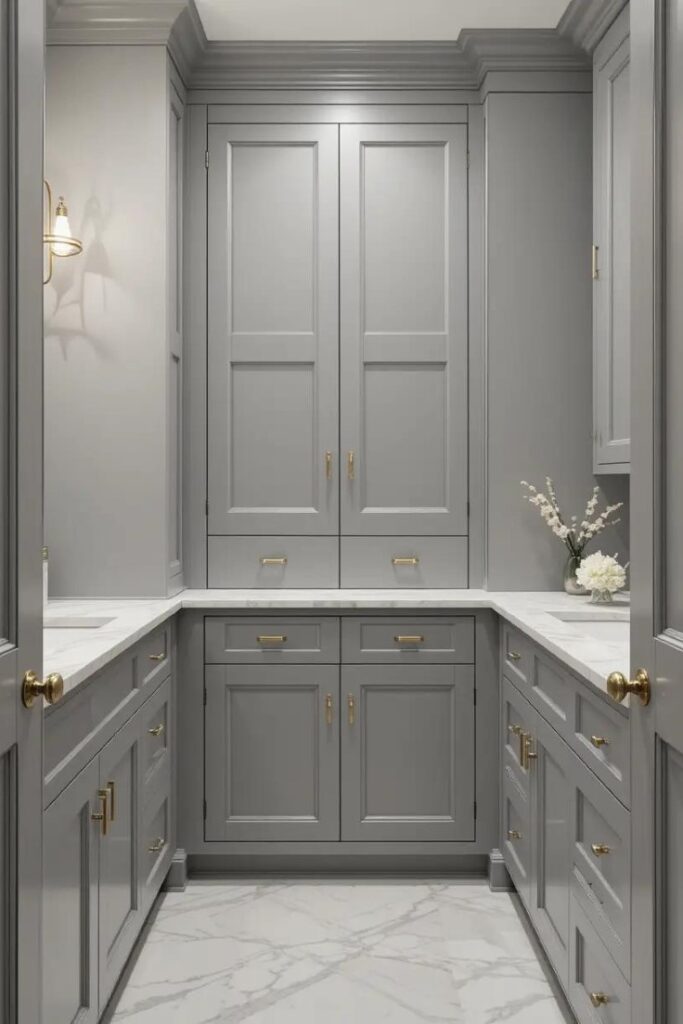
Choose soft, cloudy gray for built-in storage to create a subtle contrast against white walls. This gentle color difference adds depth without disrupting the peaceful atmosphere that makes white and gray bathrooms so appealing. Consider adding simple molding to cabinet fronts for a touch of traditional elegance.
14. Two-Tone Approach
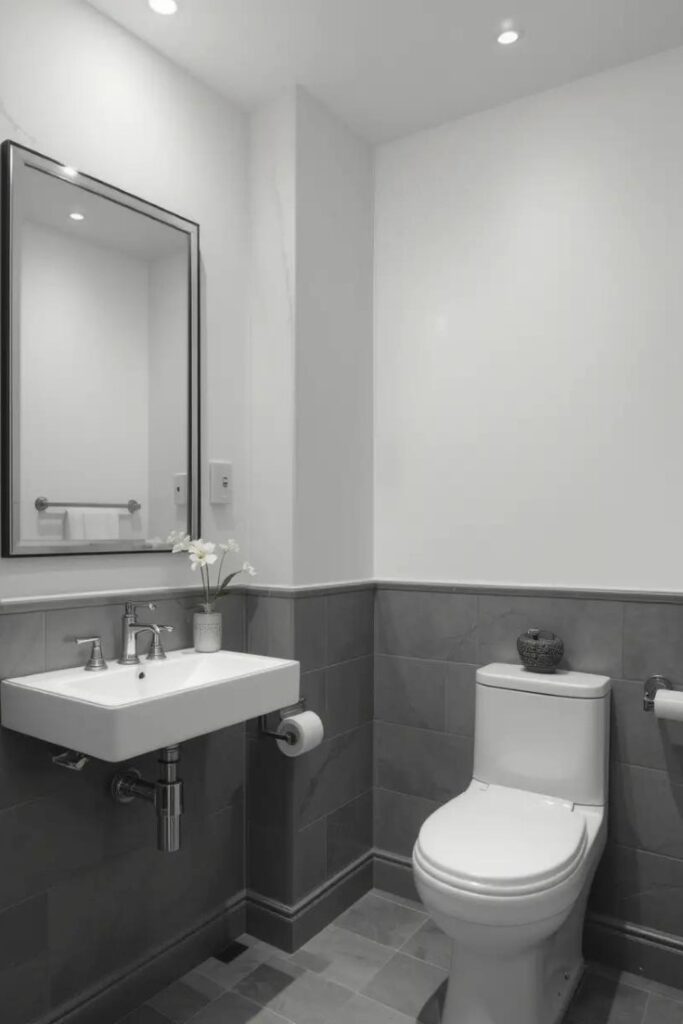
Divide your bathroom horizontally with darker gray below and crisp white above. This two-tone strategy grounds the space while maintaining brightness at eye level and above, creating a white and gray bathroom that feels balanced and intentional. This works particularly well in bathrooms with taller ceilings.
15. Minimalist Gray and White
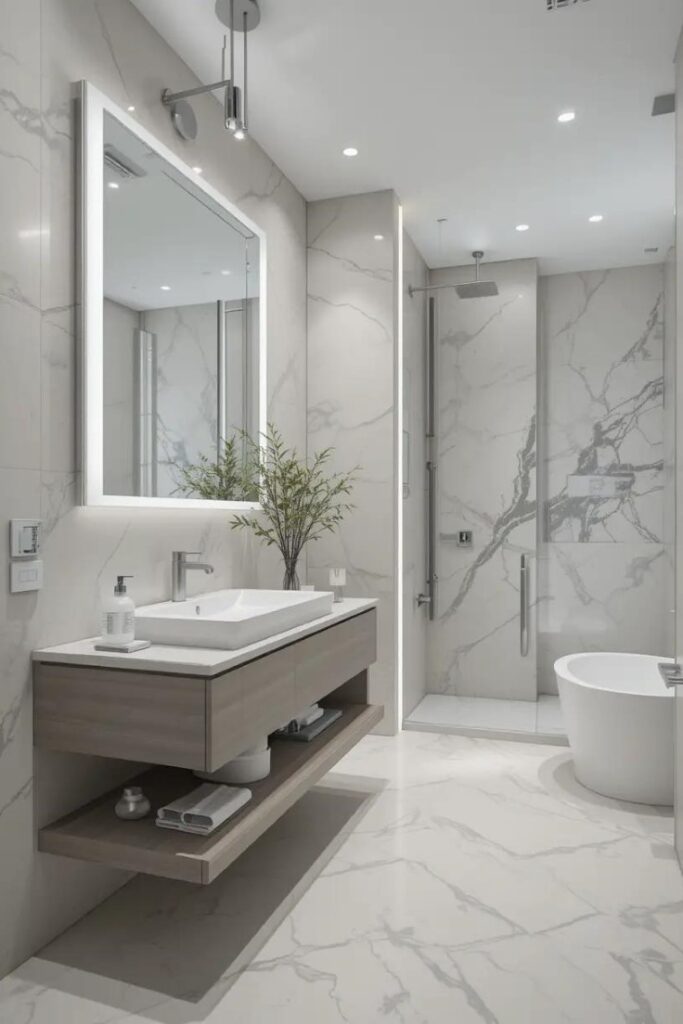
Embrace clean lines and clutter-free surfaces for a contemporary white and gray bathroom with minimalist appeal. Focus on quality materials and perfect proportions rather than decorative elements to create a space that feels both sophisticated and deeply relaxing. Consider wall-mounted fixtures and floating vanities to enhance the streamlined aesthetic.
16. Classic Carrara Marble
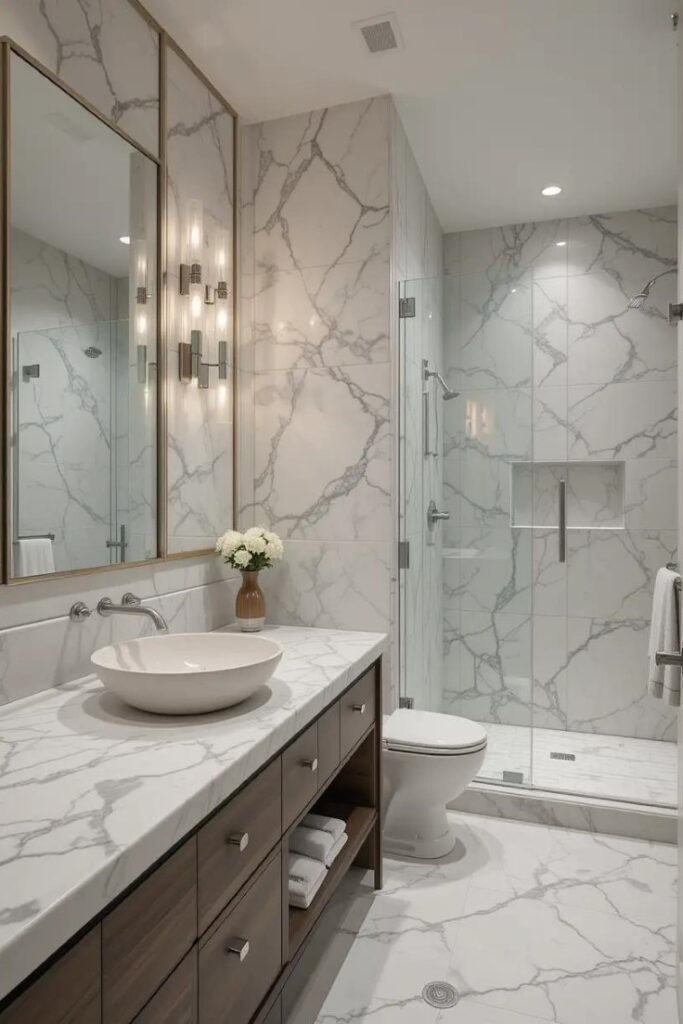
Few materials embody the white and gray bathroom concept more perfectly than Carrara marble. Its distinctive soft gray veining against a white background brings natural elegance to any bathroom design. If full marble surfaces exceed your budget, consider marble-look porcelain tiles which capture the aesthetic at a more accessible price point.
17. Gray Stone Shower
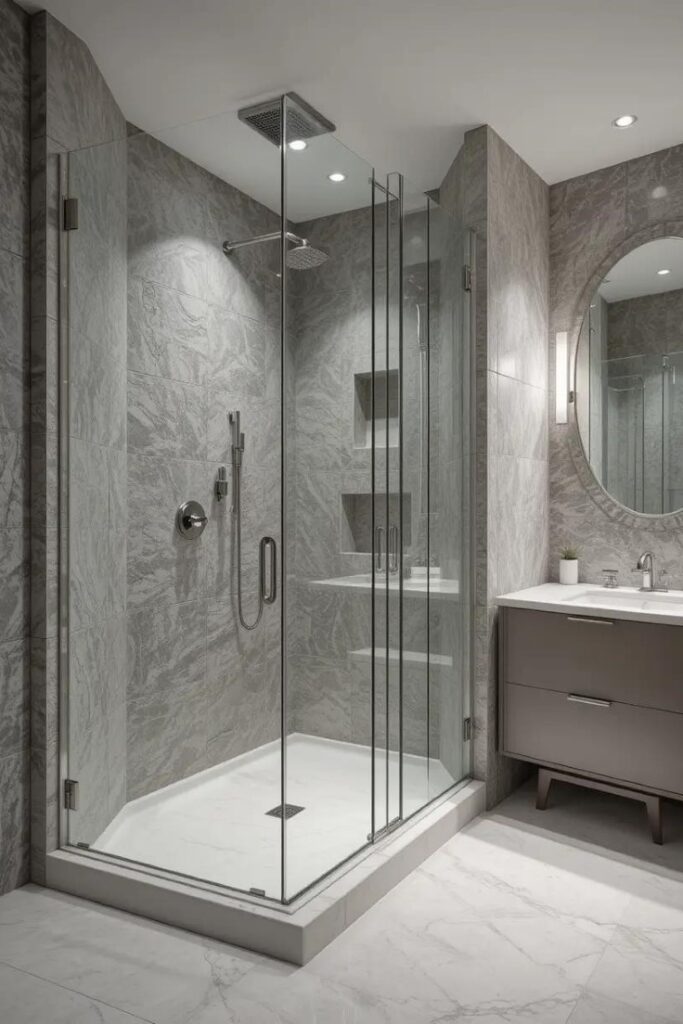
Create a striking focal point with a gray stone shower surround. Whether you choose slate, limestone, or engineered quartz, a monolithic stone shower becomes the natural centerpiece of your white and gray bathroom. Pair with white walls and minimal decoration to let this architectural element command attention.
18. Textured White Walls
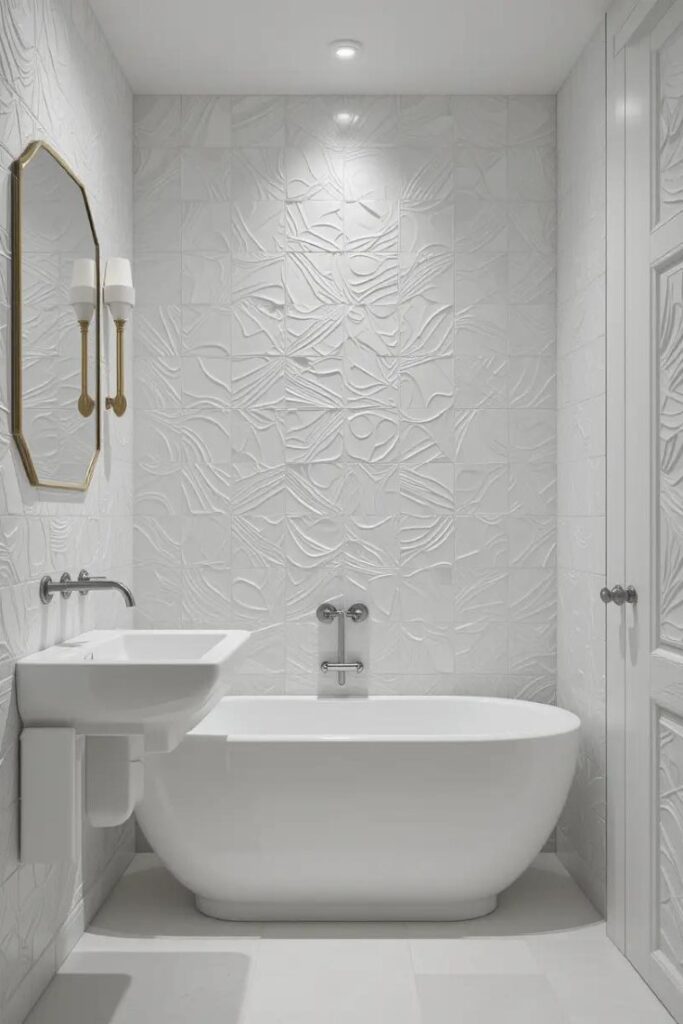
Bring dimension to your white and gray bathroom through textured white surfaces. Consider white penny tiles, subtle relief patterns, or even white shiplap to create visual interest while maintaining the bright, clean feeling that makes these bathrooms so appealing. This approach adds character without introducing competing colors.
19. Gray Floor Focus
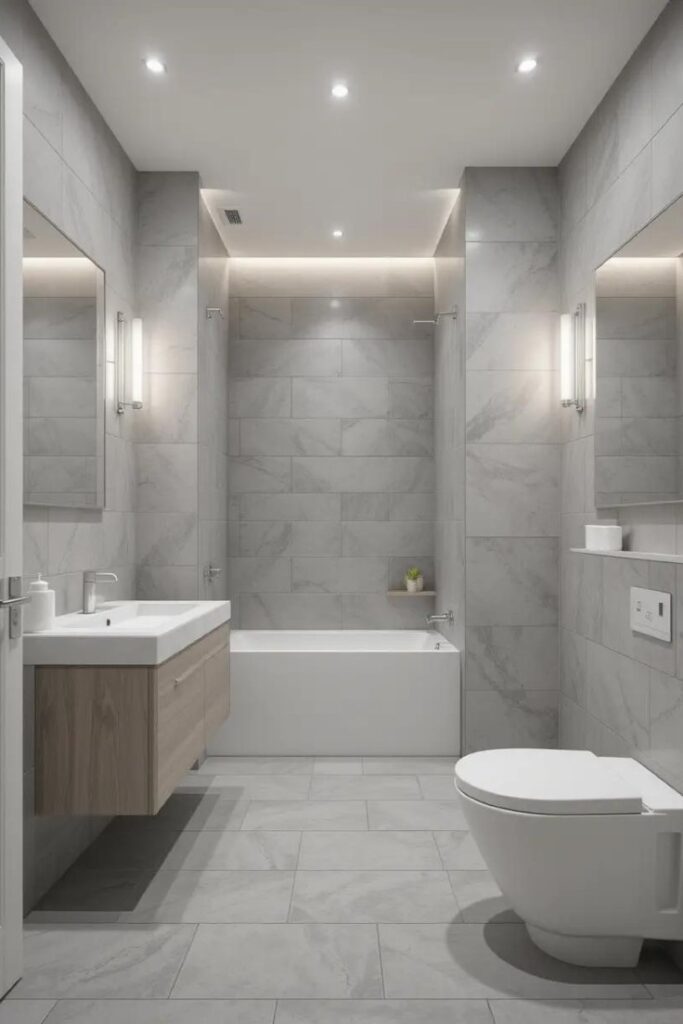
Ground your bathroom design with a distinctive gray floor. From large-format porcelain tiles to intricate mosaic patterns, a well-chosen floor becomes the foundation for a cohesive white and gray bathroom design. Consider darker grays for floors and lighter tones as you move upward for a naturally balanced effect.
20. White and Gray with Greenery
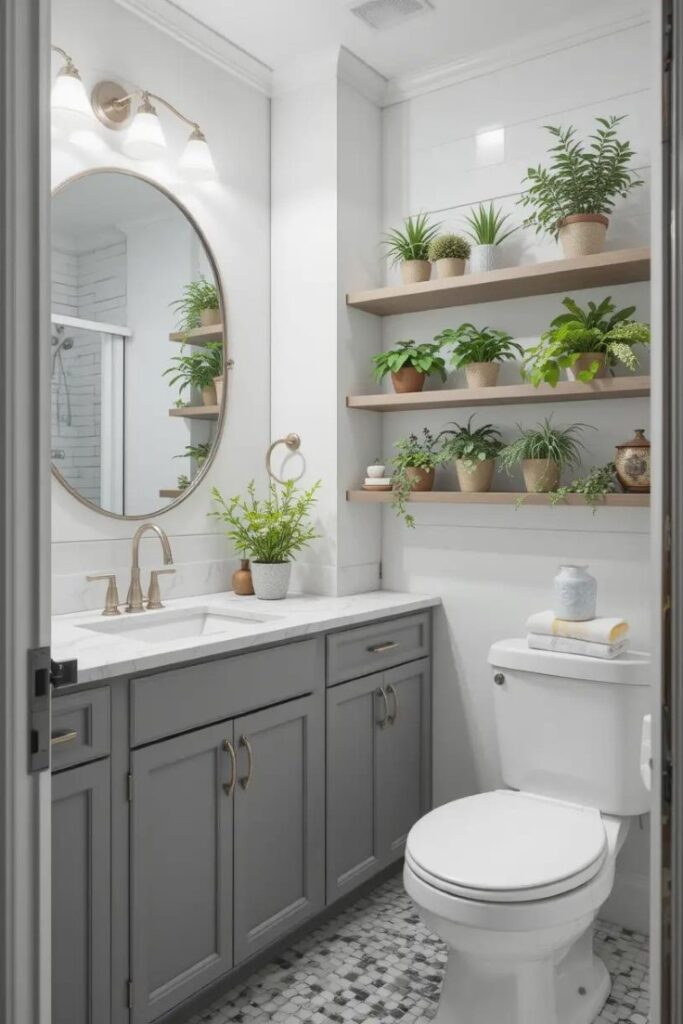
Introduce life and color through carefully selected plants. In a white and gray bathroom, greenery stands out beautifully, adding a refreshing natural element without disrupting your sophisticated color scheme. Choose moisture-loving varieties like ferns, peace lilies, or snake plants depending on your bathroom’s light conditions.
Bringing It All Together
Creating your ideal white and gray bathroom involves more than simply choosing these colors—it’s about how you combine materials, textures, and design elements to create a cohesive whole. Focus on quality rather than quantity when selecting fixtures and finishes, as the simplified color palette will highlight both thoughtful choices and unfortunate compromises.
Remember that lighting plays a crucial role in how we perceive white and gray. Test paint samples and material swatches in your actual bathroom space before making final decisions, as the particular quality of light can dramatically affect how these neutral tones appear.
Finally, don’t forget that even the most beautiful white and gray bathroom benefits from occasional accessories that reflect your personality. A carefully chosen piece of artwork, unique mirror, or special vessel can become a conversation piece that enhances rather than competes with your serene color palette.
Frequently Asked Questions
How do I keep my white and gray bathroom from feeling cold?
Incorporating natural materials like wood, woven baskets, or natural stone helps warm up a white and gray bathroom. Additionally, choosing warmer gray tones with beige or taupe undertones rather than blue-based grays can create a cozier atmosphere. Proper lighting with bulbs in the warm white spectrum (2700-3000K) rather than cool white or daylight bulbs will also significantly impact how inviting the space feels.
What’s the best way to add color to a white and gray bathroom?
The beauty of a white and gray bathroom is its versatility as a backdrop for seasonal or changing color preferences. Introduce color through easily changeable elements like towels, bath mats, shower curtains, or small accessories. Plants also add natural color that complements rather than competes with your neutral palette. If you want something more permanent, consider artwork or a single colored fixture like a colorful freestanding bathtub.
Which gray paint shade works best in a bathroom with limited natural light?
In bathrooms with minimal natural light, choose light to medium grays with warm undertones to prevent the space from feeling cave-like. Avoid grays with strong blue or green undertones, as these can make the space feel colder and darker. Consider paint colors like Benjamin Moore’s “Revere Pewter,” Sherwin Williams’ “Agreeable Gray,” or Behr’s “Silver Drop” which have subtle warm undertones that perform well in spaces with limited light.
How can I make a small white and gray bathroom feel larger?
Using the same tile on the floor and walls creates visual continuity that makes small white and gray bathrooms feel more spacious. Other effective strategies include installing a large mirror (or multiple mirrors), choosing a floating vanity to reveal more floor space, using large-format tiles with minimal grout lines, and ensuring adequate lighting. A frameless glass shower enclosure also helps maintain visual flow throughout the space.
What type of grout should I use with white and gray tiles?
For long-term satisfaction, choose a medium to dark gray grout with white tiles, as this combination hides inevitable discoloration better than white grout. With gray tiles, the choice depends on the look you’re trying to achieve—matching grout creates a seamless appearance, while contrasting grout highlights the tile pattern. Regardless of color, always use high-quality epoxy grout in wet areas for superior stain and mold resistance.
Are white and gray bathrooms going out of style?
The white and gray bathroom color combination has remarkable staying power because it’s fundamentally neutral rather than trend-based. While specific interpretations may evolve (such as the particular shade of gray or the preferred tile patterns), the basic palette provides a classic foundation that transcends short-lived trends. This makes it an excellent choice for main bathrooms where frequent updating would be impractical and expensive.
